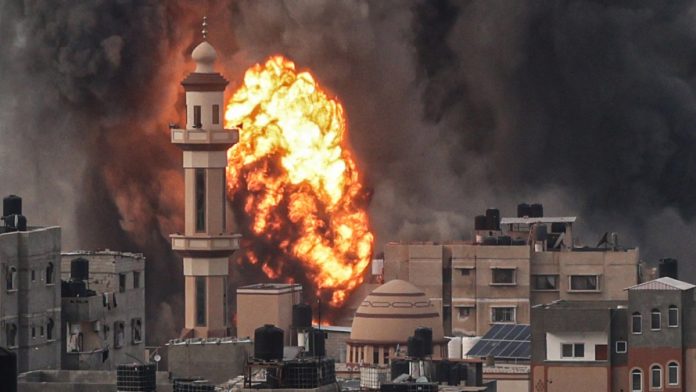Up to 164 trucks full of aid supplies have reached the Gaza Strip every day this week. That is significantly more than in previous weeks, but still not enough to provide the population in the war zone with the necessities of life: The United Nations estimates that more than half of the population is starving. Videos from the Gaza Strip show chaotic conditions when the vehicles arrived, surrounded and pursued by crowds of people. Philippe Lazzarini, director of the UN Palestinian relief agency UNRWA, reported desperate people stopping vehicles, looting and eating the food on the spot.
The number of aid deliveries is still below the 200 trucks per day that the Israeli government agreed to. Transports to the Gaza Strip are controlled by Israel for security reasons, not just those that come directly from Israel to the south of the Gaza Strip via the Karem Abu Salem border crossing. Israel is also checking trucks passing through the Egyptian border post of Rafah. For the first time on Wednesday, the United Nations hunger relief agency transported 46 trucks from Jordan to the Gaza Strip.
The checks are causing delays that diplomats from several dozen countries are trying to eliminate. However, the negotiations were very tough, as was evident at the highest diplomatic level in the UN Security Council. Improving aid delivery mechanisms is part of a United Arab Emirates resolution that also calls for a pause in fighting. The Americans have repeatedly delayed a vote on the resolution in recent days. They now held out the prospect of not using a veto to prevent the proposal from being accepted, as in the past, but rather abstaining from voting, which would allow the resolution to come into force.
Negotiations initially focused on whether the text would condemn the Hamas terrorist attack on October 7th of this year. Afterwards, a point of contention was whether the resolution should call for an end to hostilities or merely for their suspension. However, when the American delegation in New York appeared ready to pass the resolution earlier this week, the White House expressed reservations. The mechanism for controlling aid deliveries turned out to be a tough nut to crack: the Security Council suggested that this task be delegated to the UN; However, the USA spoke out against this. Secretary of State Antony Blinken stated that he did not want to introduce changes that could potentially trigger new delays. However, the message reached the UN was that Israel did not want to give up control of the trucks. British Foreign Minister David Cameron pushed for improvements. He proposed sending British ships from Cyprus directly to Gaza, he said on Thursday after talks with his Egyptian counterpart Samih Shukri.
The Americans’ back-and-forth has also angered Western diplomats; Most recently, even the ally Great Britain agreed to the text of the resolution. First, a vote was scheduled for Monday, then, at the request of the Americans, on Tuesday, Wednesday and finally Thursday. However, on Thursday the vote was postponed again. On Wednesday evening, US President Joe Biden said: “We are currently negotiating at the UN about the outlines of a resolution that we could possibly agree to.”
Biden was therefore accused of continuing to delay the urgently needed aid deliveries. However, American analysts such as Aaron David Miller of the Carnegie Endowment for International Peace defended him. Without Biden’s pressure, Israeli Prime Minister Benjamin Netanyahu would not allow any aid to reach Gaza at all. A Security Council resolution feels good, “but it will not force Netanyahu to do more; only Biden can do that,” he commented on Platform X.
Netanyahu, meanwhile, rejected calls for a ceasefire, while Hamas officials traveled to Egypt for renewed talks on a pause in fighting and the release of hostages. The Israeli army on Wednesday led journalists into a network of tunnels under Gaza City, which it described as a “massive tunnel system,” the AP reported. Hamas leaders have set up apartments 20 meters underground, as well as command rooms, water and electricity shafts and other rooms, accessed by stairs and elevators.



